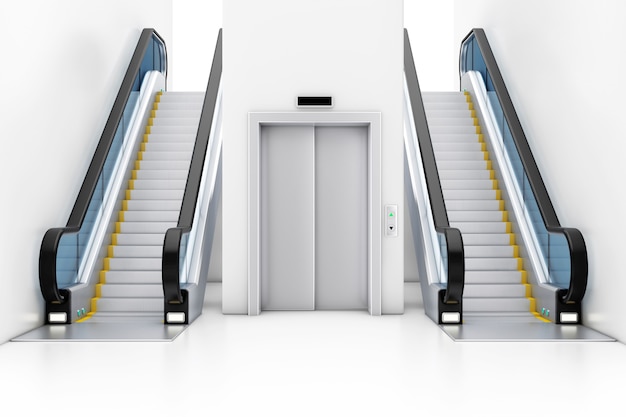Leading Lift Companies in London: Providing Exceptional Solution and Support
Leading Lift Companies in London: Providing Exceptional Solution and Support
Blog Article
Digging Into the Globe of Lifts: Typical Concerns Encountered by Numerous Lift Systems
As we browse with the vertical transportation systems of contemporary buildings, elevators stand out as a crucial element of our daily lives. From hydraulic elevators to traction systems and machine-room-less layouts, each lift kind comes with its collection of usual issues.
Hydraulic Elevators
Hydraulic elevators, often favored for low-rise structures, utilize fluid pressure to manage the movement of the elevator cars and truck (lift repair companies). This mechanism entails a hydraulic pump pushing oil into a cyndrical tube, creating the lift to move in the desired instructions. While hydraulic lifts are known for their smooth and peaceful procedure, they do include their own collection of common problems
One widespread issue with hydraulic lifts is oil leakage. The seals in the hydraulic system can break in time, bring about oil infiltration. If left unaddressed, this not just produces a mess however can also affect the lift's performance. Furthermore, problems with the control system, such as damaged valves or a malfunctioning pump, can trigger interruptions in the lift's activity.
Normal maintenance and punctual repair work are important to make sure the smooth functioning of hydraulic lifts. By attending to these usual issues proactively, building proprietors can lessen downtime and make sure the safety and security and efficiency of their upright transport system.
Traction Elevators
When thinking about vertical transport systems in buildings, another common type apart from hydraulic lifts is the traction lift. Grip elevators operate using a system of ropes and weights that relocate the elevator vehicle by gripping onto the hoist ropes. This system enables for smoother and quicker upright transportation contrasted to hydraulic systems.
One of the usual issues encountered by grip elevators is rope wear. The consistent movement of the ropes within the grip system can result in tear and put on with time, potentially creating the elevator to breakdown or become unsafe for usage. Normal examinations and upkeep of the ropes are important to guarantee the elevator's appropriate functioning and safety.
An additional concern that traction lifts might come across is associated with the control system. Issues with the control system can result in concerns such as irregular motion, delays in reaction times, or perhaps full closures. Routine screening and maintenance of the control system are important to stop such problems and ensure the elevator's dependability.
Machine-Room-Less (MRL) Lifts

Among the essential parts of MRL lifts is the compact gearless grip device that is installed within the hoistway. This machine efficiently drives the elevator vehicle without the demand for cumbersome devices click now discovered in conventional grip elevators. Furthermore, MRL lifts normally make use of a weight system to balance the vehicle, more enhancing their power efficiency.
Regardless of their advantages, MRL lifts might deal with obstacles connected to upkeep and repair due to the constrained area for equipment setup. Ease of access for servicing elements within the shaft can be restricted, requiring specialized training for professionals. Appropriate upkeep routines and regular evaluations are essential to ensure the ongoing smooth operation of MRL elevators.
Overloading and Weight Limit Issues
Overloading and weight restriction issues are vital worries in lift operations. Elevator makers design raises with details weight capacities to guarantee guest safety and devices long life.
When lifts are overloaded, it puts too much stress on the electric motor, cable televisions, and various other elements, possibly causing malfunctions or failures. If they detect excess weight, safety devices such as sensing units and overload sensing units are in place to protect against elevators from relocating. Additionally, surpassing weight limitations can lead to raised energy intake and damage on the lift system.
To alleviate overwhelming issues, building managers must browse around these guys prominently show weight limitations in lifts and enlighten owners on the significance of adhering to these restrictions - lift repair companies. Normal maintenance checks by qualified specialists can also aid guarantee that lifts are running within secure weight specifications. By addressing overloading and weight limit problems proactively, building owners can enhance elevator security and effectiveness
Electric System Failures
Going beyond weight limitations in lifts can not just cause mechanical issues yet likewise potentially add to electrical system failures within the lift framework. Electrical system failings are a critical worry in elevator operation, as they can trigger unforeseen closures, malfunctions, or even safety and security hazards. One usual electric problem is the overheating of parts as a result of too much existing circulation created by straining the elevator beyond its capacity. This can result in harm to the control, motor, or circuitry systems, causing pricey repairs and downtime.
In addition, power surges or fluctuations in the electrical supply can also interfere with the elevator's operation, affecting its performance and security. These electric disturbances can damage sensitive elevator components such as control panels, circuit card, or sensing units, leading to system failures. Regular upkeep and inspections are essential to recognize and attend to prospective electric problems immediately, making sure the efficient and risk-free procedure of elevator systems. By adhering to weight limitations and conducting routine electrical system checks, building owners can minimize the risk of electric failures in lifts.
Final Thought

Hydraulic elevators, commonly favored for low-rise structures, utilize fluid pressure to regulate the activity of the elevator cars and truck.When taking into consideration vertical transportation systems in buildings, another usual type aside from hydraulic elevators is the traction lift. Traction elevators operate making use of a system of ropes and counterweights that Visit Website relocate the lift vehicle by clutching onto the hoist ropes. Unlike typical elevators that call for a separate equipment area to house the tools, MRL lifts incorporate many of the elements within the shaft, getting rid of the requirement for a specialized maker space.In verdict, lifts deal with usual issues such as hydraulic breakdowns, grip system failings, and electrical system problems.
Report this page